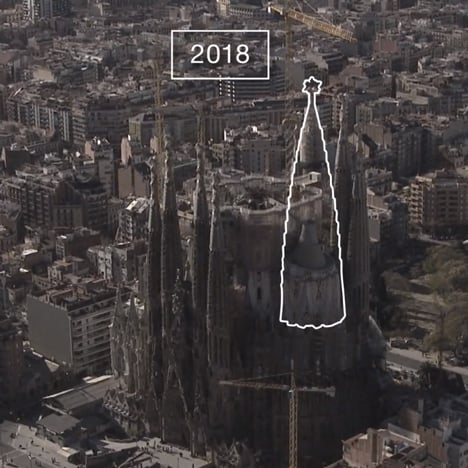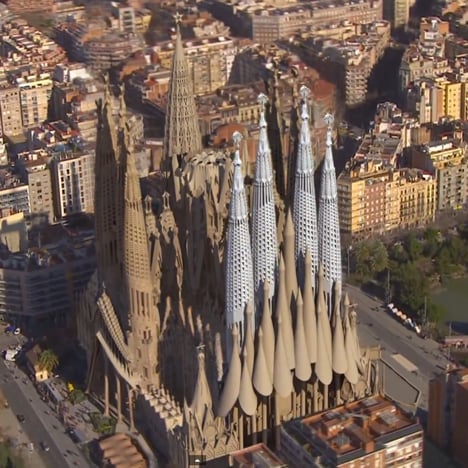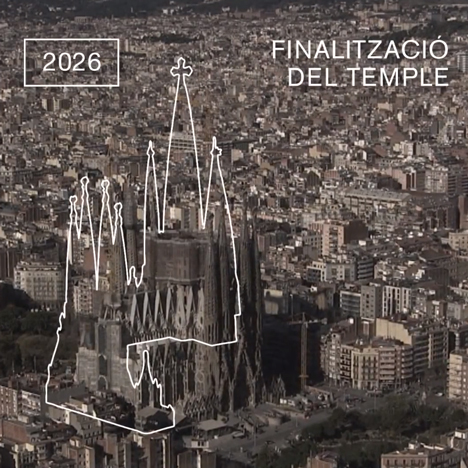 [Image: Triggered lightning technology at the
University of Florida's Lightning
Research Group].
[Image: Triggered lightning technology at the
University of Florida's Lightning
Research Group].This past winter, I had the pleasure of
traveling around south Florida with
Smout
Allen,
Kyle
Buchanan, and nearly two dozen students from
Unit
11 at the
Bartlett School of
Architecture.
Florida's variable terrains—of
sink
holes,
swamps,
and eroding beaches—and its Herculean infrastructure, from canals and freeways
to theme parks and rocket facilities, served as the narrative backdrop for the
many architectural projects ultimately produced by the class (in addition, of
course, to the 2012 U.S. Presidential election, the results of which we watched
live from the bar of a tropical-themed hotel near Cape Canaveral, next door to
Ron
Jon).
While there were many, many interesting projects resulting from
the trip, and from the
Unit
in general, there is one that I thought I'd post here, by student Farah Aliza
Badaruddin, particularly for the quality of its drawings.

 [Images: From a project by Farah Aliza Badaruddin at
the Bartlett
School of Architecture].
[Images: From a project by Farah Aliza Badaruddin at
the Bartlett
School of Architecture].Badaruddin's project explored the
large-scale architectural implications of applying radical weather technologies
to the task of landscape remediation, asking specifically if Cape Canaveral's
highly contaminated ground water—polluted by a "
viscous
toxic goo" made from tens of thousands of pounds of rocket fuels, chemical
plumes, solvents, and other industrial waste products over the decades—could be
decontaminated through
pyrolysis, using
guided and controlled bursts of lightning.
In her own words, Badaruddin
explains that the would test "the idea that lightning can be harnessed on-site
to pyrolyse highly contaminated groundwater as an approach to remediate the
polluted site."
These controlled and repetitive lightning strikes would
also, in turn, help fertilize the soil, producing a kind of
bio-electro-agricultural event of truly cosmic (or at least
Miller-Ureyan)
proportions.
 [Image: Triggered lightning technology at the
University of Florida Lightning
Research Group].
[Image: Triggered lightning technology at the
University of Florida Lightning
Research Group].Her maps of the area—which she presents as
if drawn in a Moleskine notebook—show the terrestrial borders of the proposal
(although volumetric maps of the sky, showing the project's fully
three-dimensional engagement with regional weather systems, would have been an
equally, if not more, effective way of showing the project's spatial
boundaries).
This raises the awesome question of how you should most
accurately represent an architectural project whose central goal is to wield
electrical influence on the atmosphere around it.





 [Images: From a project by Farah Aliza Badaruddin at
the Bartlett
School of Architecture].
[Images: From a project by Farah Aliza Badaruddin at
the Bartlett
School of Architecture].In short, her design proposes a new
infrastructure of "rocket-triggered lightning technology," assisted and
supervised by a peripheral network of dirigibles—floating airships that
"surround the site and serve as the observatory platform for a proposed
lightning visitor centre and the weather research center."
The former
was directly inspired by real-world lightning research equipment found at the
University of Florida's
Lightning
Research Group.
 [Image: Triggered lightning technology at the
University of Florida's Lightning
Research Group].
[Image: Triggered lightning technology at the
University of Florida's Lightning
Research Group].Badaruddin's own rocket triggers would be
used both to attract and "to provide direct lightning strikes to the proposed
sites," thus pyrolizing the landscape and purifying both ground water and soil.
 [Image: Aerial collage view of the lightning farm,
by Farah Aliza Badaruddin at the Bartlett
School of Architecture].
[Image: Aerial collage view of the lightning farm,
by Farah Aliza Badaruddin at the Bartlett
School of Architecture].The result would be a lightning
farm, a titanic landscape tuned to the sky, flashing with controlled lightning
strikes as the ground conditions are gradually remediated—an unmoving, nearly
permanent, artificial electrical storm like something out of Norse mythology,
cleansing the earth of toxic chemicals and preparing the site for future reuse.
 [Image: Collage of the lightning farm, by Farah
Aliza Badaruddin at the Bartlett
School of Architecture].
[Image: Collage of the lightning farm, by Farah
Aliza Badaruddin at the Bartlett
School of Architecture].I should say that my own interest in
these kinds of proposals is less in their future workability and more in what it
means to see a technology taken out of context, picked apart for its spatial
implications, and then re-scaled and transformed into a speculative work of
landscape architecture. The value, in other words, is in re-thinking existing
technologies by placing them at unexpected scales in unexpected conditions,
simultaneously extracting an architectural proposal from that and perhaps
catalyzing innovative new ways for the original technology itself to be
redeveloped or used.
 [Image: Farah Aliza Badaruddin].
[Image: Farah Aliza Badaruddin].It's
not a question of whether or not something can be immediately realized or built;
it's a question of how open-ended, fictional design proposals can change the way
someone thinks about an entire field or class of technologies.

















 [Image: Triggered lightning technology at the
University of Florida's
[Image: Triggered lightning technology at the
University of Florida's 
 [Images: From a project by Farah Aliza Badaruddin at
the
[Images: From a project by Farah Aliza Badaruddin at
the  [Image: Triggered lightning technology at the
University of Florida
[Image: Triggered lightning technology at the
University of Florida 




 [Images: From a project by Farah Aliza Badaruddin at
the
[Images: From a project by Farah Aliza Badaruddin at
the  [Image: Triggered lightning technology at the
University of Florida's
[Image: Triggered lightning technology at the
University of Florida's  [Image: Aerial collage view of the lightning farm,
by Farah Aliza Badaruddin at the
[Image: Aerial collage view of the lightning farm,
by Farah Aliza Badaruddin at the  [Image: Collage of the lightning farm, by Farah
Aliza Badaruddin at the
[Image: Collage of the lightning farm, by Farah
Aliza Badaruddin at the  [Image: Farah Aliza Badaruddin].
[Image: Farah Aliza Badaruddin].